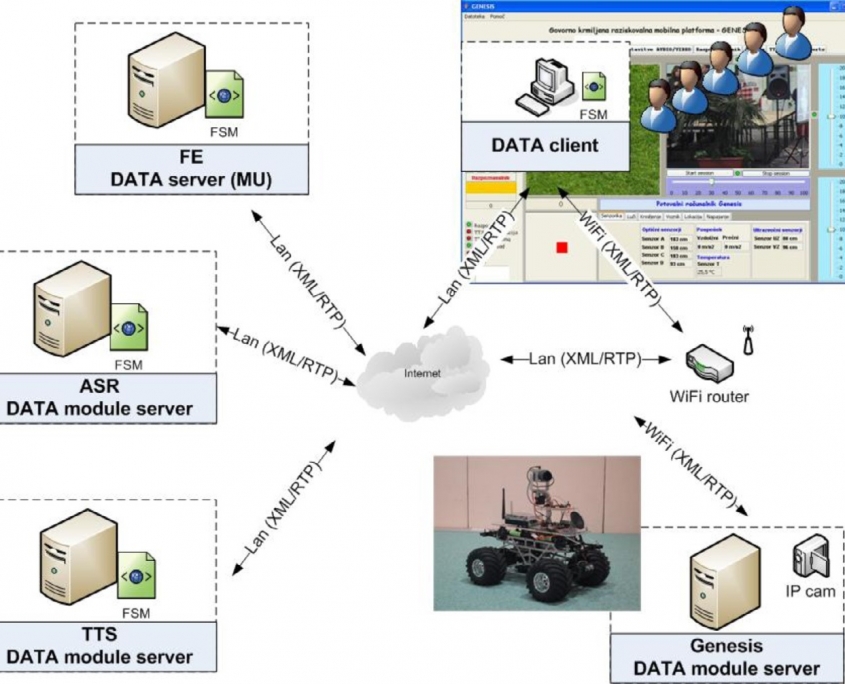 https://dsplab.feri.um.si/wp-content/uploads/peterfekonja-elektronika-magnaloga-0.jpg
630
1183
Matej
https://dsplab.feri.um.si/wp-content/uploads/dsplab_color.png
Matej2021-03-06 16:18:202021-03-07 16:55:00Development of object detection system for autonomous vehicles by using LiDAR technology
https://dsplab.feri.um.si/wp-content/uploads/peterfekonja-elektronika-magnaloga-0.jpg
630
1183
Matej
https://dsplab.feri.um.si/wp-content/uploads/dsplab_color.png
Matej2021-03-06 16:18:202021-03-07 16:55:00Development of object detection system for autonomous vehicles by using LiDAR technologyStudent projects
Genesis II: Autonomous platform based on conversational intelligence
Using deep learning in autonomous driving for perception AI, localization, planning and driving AI. Using NVIDIA AI system for autonomous driving, such as: training on DGX-1, driving with edge AI, NVIDIA self-driving building blocks, NVIDIA developer toolchain. Key challenges: (i) hardware limitations – computational, power consumption, zero latency, (ii) precise environmental model estimation for occlusion avoiding, (iii) dependency on inaccurate map and navigation data, (iv) distributed HW architectures, platform flexibility requirements, (v) high precision absolute and relative positioning requirements, (vi) components synchronization and latency avoidance, (vii) embedded memory usage limitations, different memory models, (viii) algorithms should be both configurable and efficient, (ix) variety of inputs under different platforms, (x) out-of-vehicle simulation.
Genesis II: Lane detection by using Jetson TX2 (student: Karlo Crnek)
Genesis I: A speech-based platform for intelligent ambience and/or supportive environ-ment applications is presented.
The platform has a distributed architecture, which enables extended connectivity and support for multiple intelligent ambience services. The mobile unit Genesis is an integral part of the distributed platform, named DATA system, enabling interaction between several users and the environment. Furthermore, its sophisticated client/server platform’s architecture incorporates robust speech recognition and text-to-speech synthesis engines for more natural human-machine interaction between users and the mobile unit Genesis. Both engines are multilingual oriented. Although the whole system is developed for the Slovenian language, it can be quickly adapted for other languages, when appropriate lan- guage resources are available. With high speaker independent speech recognition accuracy and low command-to-operation delay, Genesis proves to have good manoeuvrability and it is easy to operate even by a non-experienced operator.
The module servers are organised in a similar way as the main server. They all contain a pool of threads ( PooledThread object). In this case, however, the threads are used to run several ASR or TTS engines that run simultaneously. After each request from the main server, the available thread is simply picked up from the pool and used for running the dedicated task (e.g., speech recognition/speech synthesis, performing a control command, etc.). TTS or ASR module servers reply with the corresponding output (ASR result/synthesized message). When no more threads are available in the pool, the module servers buffer the incoming data and the responsiveness of the whole system can potentially slow down. The protocol used between the main server and all of the module servers is also a proprietary XML-based protocol, meaning that plain text XML packets are used in a request/confirmation way, containing, for example, features for ASR, text for TTS, or mobile robotic unit data. The BaseServer class is used for communication with the main server. The extended class ServerService (extended from BaseServer ) is used for implementing the data transportation mechanism. The interface FrameTransporter defines methods for sending/receiving packets to/from the main server. This interface is used by the XML- Frame class for the construction/transportation of XML packets to/from the module server. This class is extended from the more general Frame class. The ServerService class takes care of establishing a connection with the main server and oversees the creation of a pool of threads. The TTS module server has the role of the RTP data transmitter. The ASR module server, on the other hand, simply receives features from the main server and returns ASR results. All module servers therefore need an RTP package containing the corresponding objects and methods needed for RTP transceiving. Since ASR and TTS modules are written in the native C/C ++ programming language, the JNI (Java native interface) is also implemented in the module servers.



















Project group
Scientific and engineering expertise